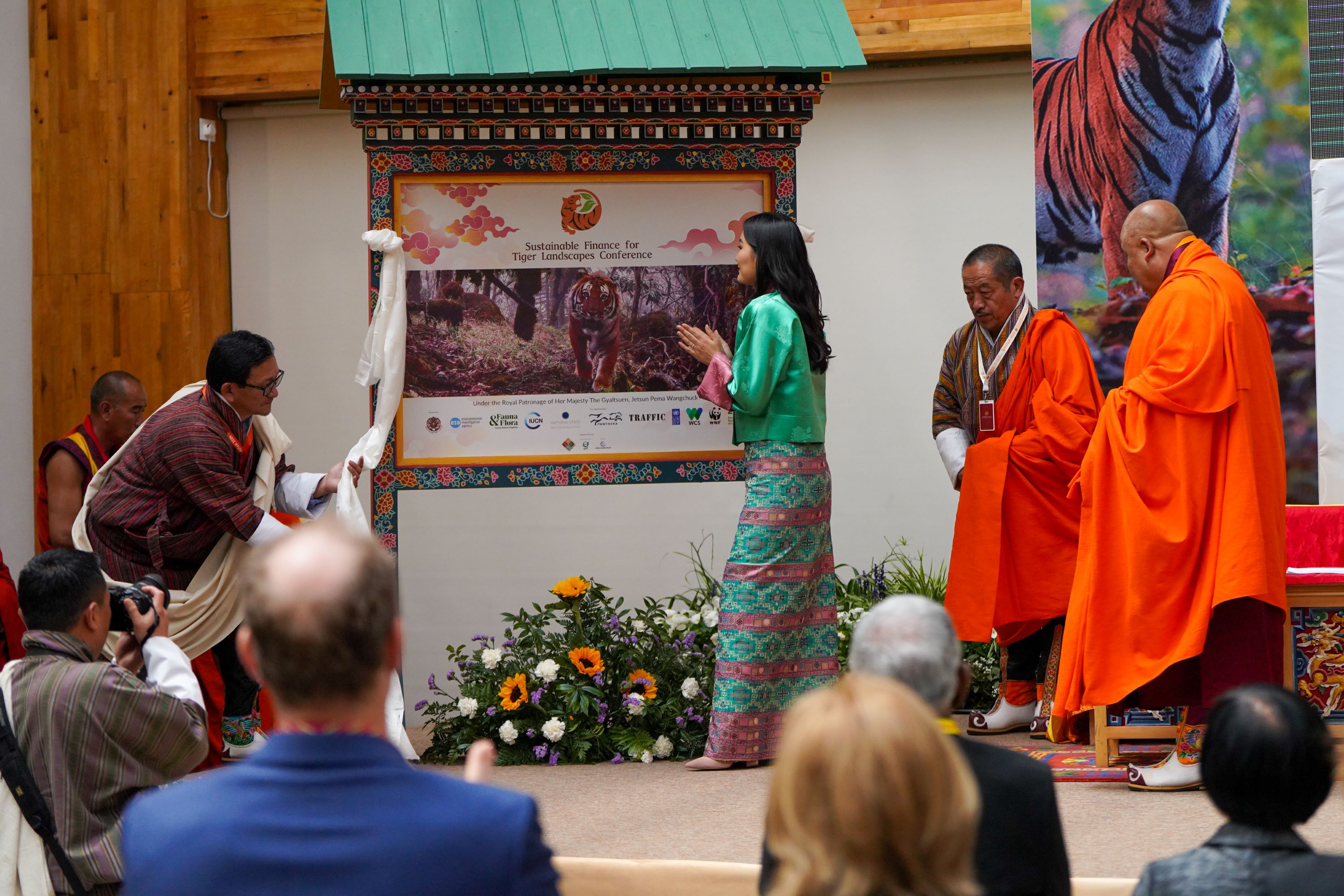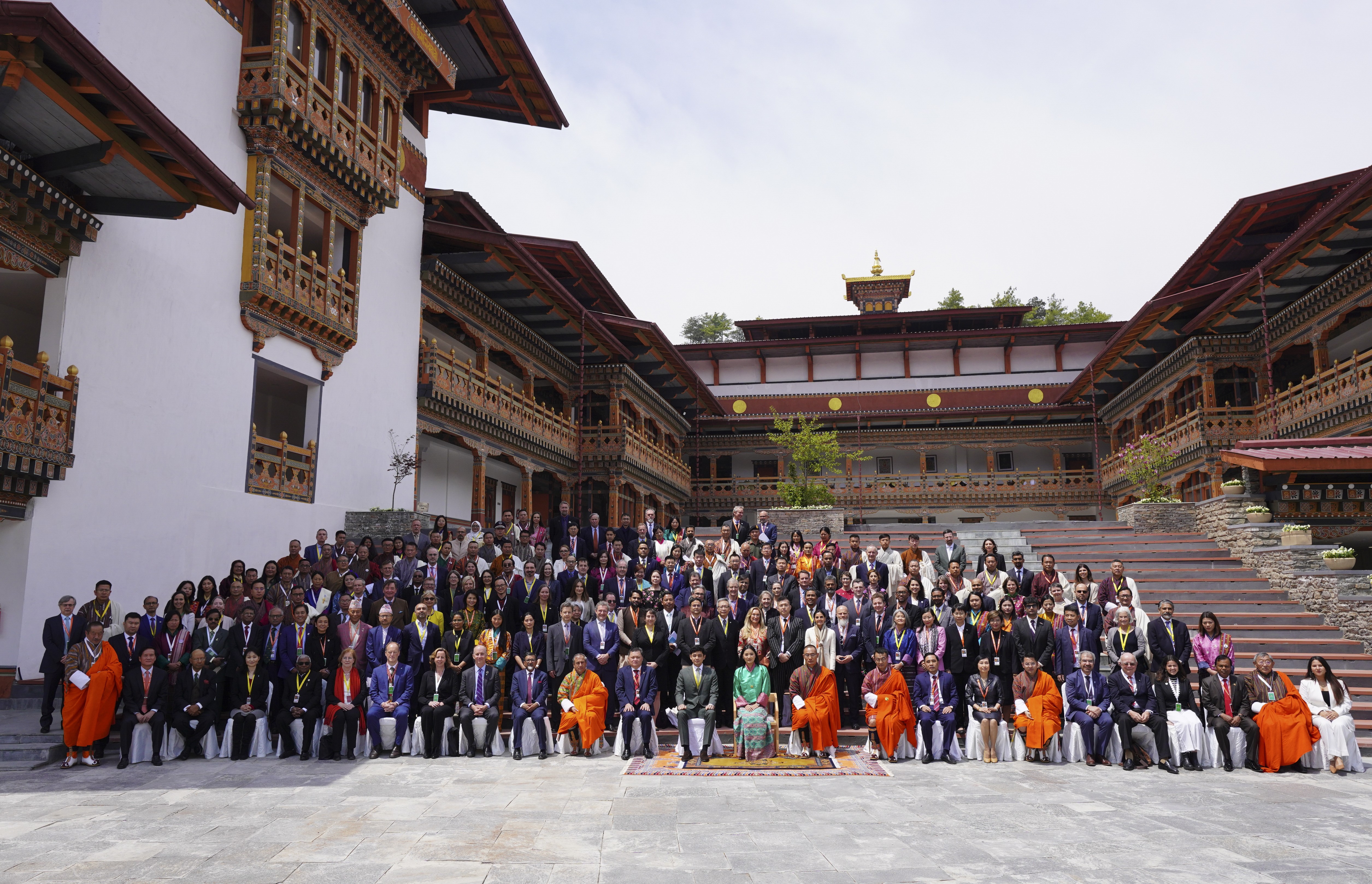Marking a historic moment for global conservation efforts, the Sustainable Finance for Tiger Landscapes Conference concludes on a high note
Bhutan and the Tiger Conservation Coalition Commit to Catalysing US$1 billion for tigers
April 24, 2024

Tiger recorded on camera trap in northern Malaysia.
Paro, April 23 2024 – The Sustainable Finance for Tiger Landscapes Conference concluded today on a high note, marking a historic moment for global conservation efforts. The conference was opened yesterday by Her Majesty The Queen of Bhutan, under whose patronage this effort to mobilise greater support for protecting tigers and tiger landscapes has come to fruition.
In an address at the opening ceremony, Her Majesty spoke about the urgency of protecting tiger habitats to safeguard the wellbeing of our planet, and the importance of sustainable funding to carry out this task.
Her Majesty said "In our commitment to conservation, we must not neglect the realistic and vital need for sustainable funding. All too often, the invaluable work of conservationists is impeded by the unpredictability of financial support. Therefore, the intention of this conference is to raise significant resources through innovative financing mechanisms for tiger landscapes.”

Her Majesty The Queen of Bhutan, Jetsun Pema Wangchuck launched the conference on 22 April 2024
The inaugural event held in the inspiring setting of Dungkar Dzong in Pangbisa, Paro, Bhutan, convened tiger range countries, visionary private and public sector donors, international development agencies, the Tiger Conservation Coalition and other conservation organisations to pave the way for innovative solutions to sustainably finance tiger landscape conservation. High-level representatives from ten tiger range countries delivered statements on the progress and ambitions for conserving their tiger landscapes, including key financing challenges and opportunities. There was an address from His Royal Highness Tengku Hassanal Ibrahim Alam Shah, Crown Prince of Pahang, about his commitment to increasing protected area coverage in Malaysia.
The conference culminated with the Paro Statement by the Royal Government of Bhutan in partnership with the Tiger Conservation Coalition, inviting participants to join the shared commitment to mobilise an additional US$1 billion to conserve tigers and tiger landscapes over the next ten years. In addition to securing and increasing the global tiger population, these funds will contribute to expanding tiger range, enhancing the ecological integrity and overall biodiversity of those areas while at the same time benefiting the local communities that share space with this species.
Valerie Hickey, Global Director of Environment, Natural Resources and Blue Economy, World Bank said, “We will never have a world without poverty in a world without tigers.”
His Excellency the Prime Minister of Bhutan, Dasho Tshering Tobgay, said, “Tigers represent much more than endangered animals. Tigers represent the health of our forests and resilience of entire ecosystems. More importantly, tigers represent our collective wellbeing and that of our future. To get the work done, we need resources; we need funds. This is why this conference can be a watershed moment in the history of tigers and conservation.”
The Paro Statement illustrates a dedication to implementing innovative finance solutions, fostering international and public-private collaboration, and supporting national-level initiatives that co-benefit tigers and people. This ambition was reflected in the conference proceedings, where numerous opportunities for sustainable financing that might be implemented or scaled in support of conservation efforts in tiger range countries were outlined. The UNDP presented one of these solutions in the Tiger Landscapes Investment Fund, a new blended financial mechanism under development that would catalyze nature-positive businesses with positive impacts on tigers, biodiversity, and people. In addition, the Asian Development Bank noted its intention to explore opportunities to support relevant countries with innovative financing instruments such as a tiger bond to engage private sector investors and promote nature based solutions and conservation.
In a closing statement, Lobzang Dorji, Director of the Department of Forests and Park Services with Bhutan’s Ministry of Energy and Natural Resources, expressed gratitude to all participants for their dedication to the cause and emphasised the importance of continued collaboration to achieve the ambitious goals captured in the Paro Statement.
The Conference is the first step in a ten-year collaborative process towards securing sustainable financing for the conservation of tiger landscapes.

Participants at the Sustainable Finance for Tiger Landscapes Conference.
About the Tiger Conservation Coalition
The Tiger Conservation Coalition brings together leading biologists and experts in wildlife crime, human-wildlife coexistence, policy, finance, development and communications, with unprecedented alignment on achieving tiger conservation at scale. Its member organisations include the International Union for Conservation of Nature (IUCN), the Environmental Investigation Agency; Fauna & Flora; Natural State; Panthera; TRAFFIC; the United Nations Development Programme (UNDP); the Wildlife Conservation Society; Worldwide Fund for Nature (WWF) and the Zoological Society of London (ZSL).
For more information contact info@tigercoalition.org

 Locations
Locations



